Thinking about doing a fall clean-up in your garden? Maybe you are planning to remove the layer of naturally fallen leaves that are beginning to blanket your planting beds?
I hope my encounter with a Red-banded Hairstreak will prompt you to change your plans.
On a recent walk on a woodland trail near my home in central New Jersey, I had just turned around to head back to my car when I noticed a flutter of brownish wings at ground level at the edge of the trail. My first thought was that it was probably a moth, but when I saw the insect in profile, I could tell it was a butterfly. As I looked more closely, I saw the tell-tale markings of a Red-banded Hairstreak. I decided to watch for a while.

She stayed on the ground, walking over obstacles that seemed like they would be a challenge for someone her size, especially when she could choose to fly. While I observed her, she climbed over leaves, rocks, leaf stems and small branches, never once taking to the air. Several times she paused in place for a few seconds. Was she just resting, or maybe getting her bearings? No! She had a purpose in mind.
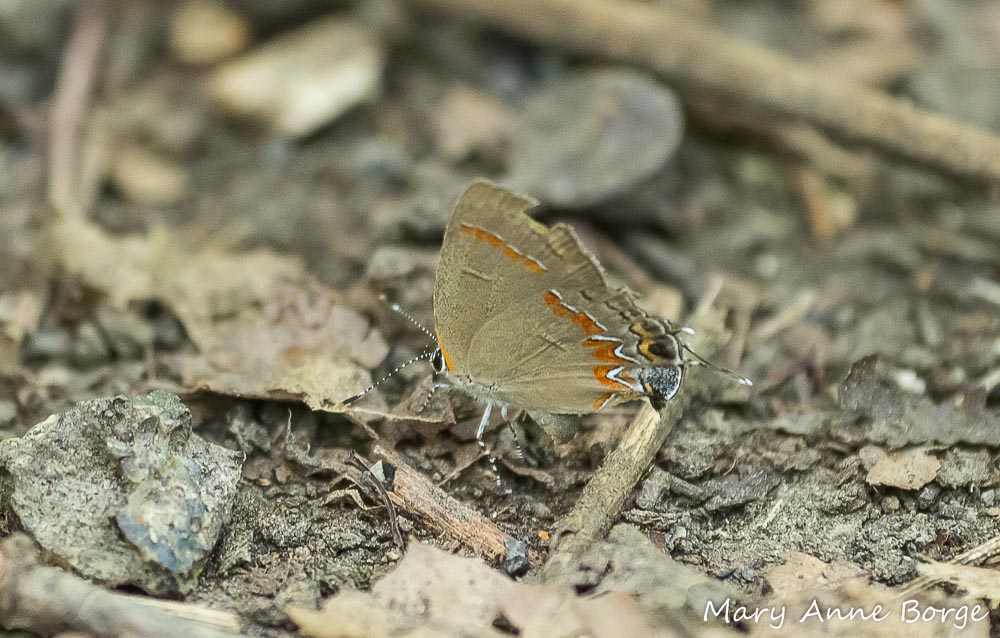
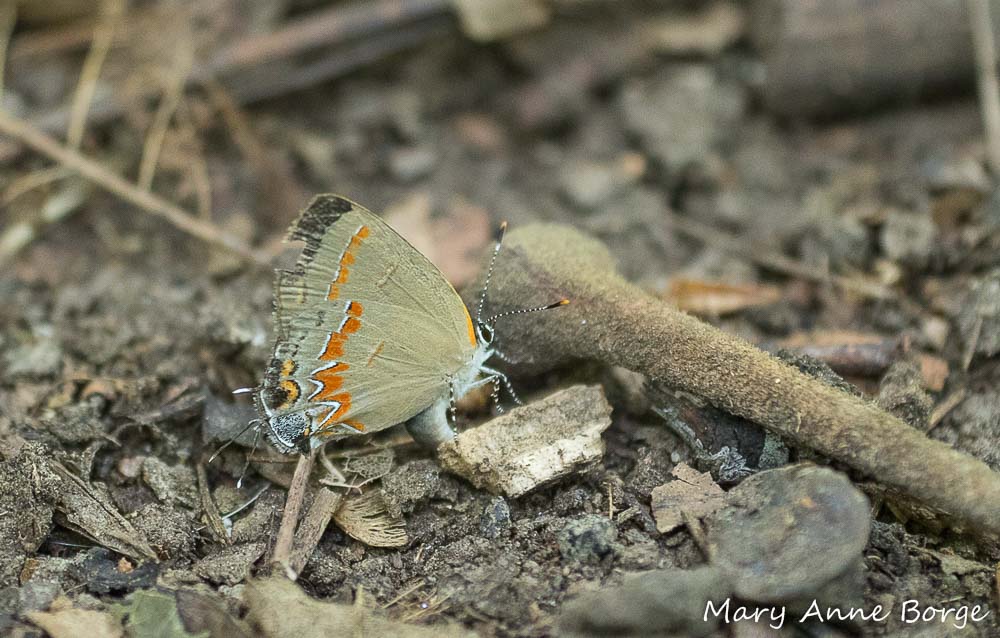
Red-banded Hairstreak caterpillars eat fallen leaves and other decaying plant matter. This little female was laying eggs on or near the kinds of material that her caterpillars would need to eat when they hatched. She alternated walking for a bit with brief pauses to lay an egg.
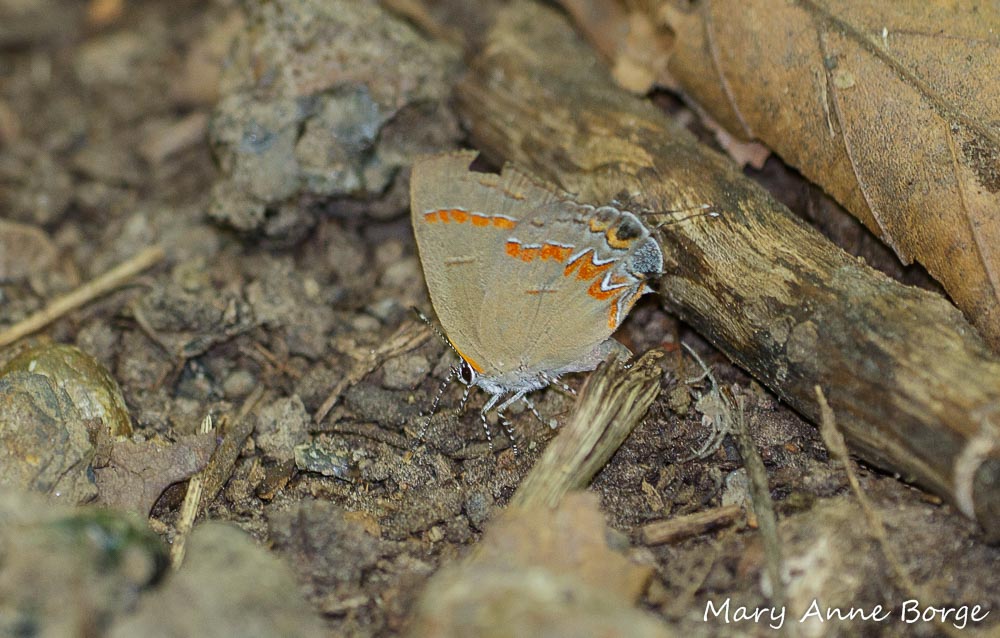
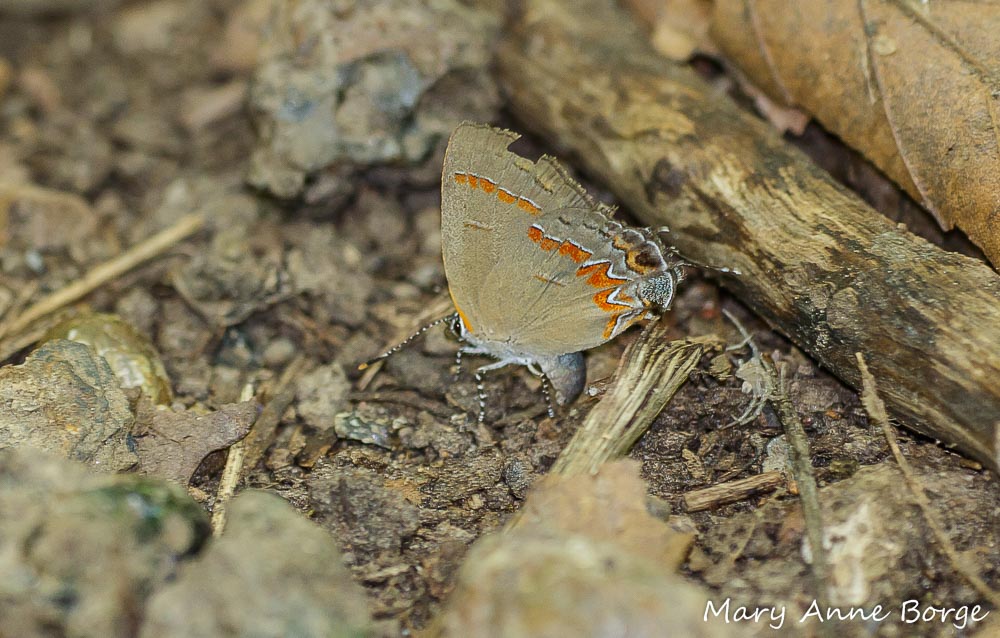
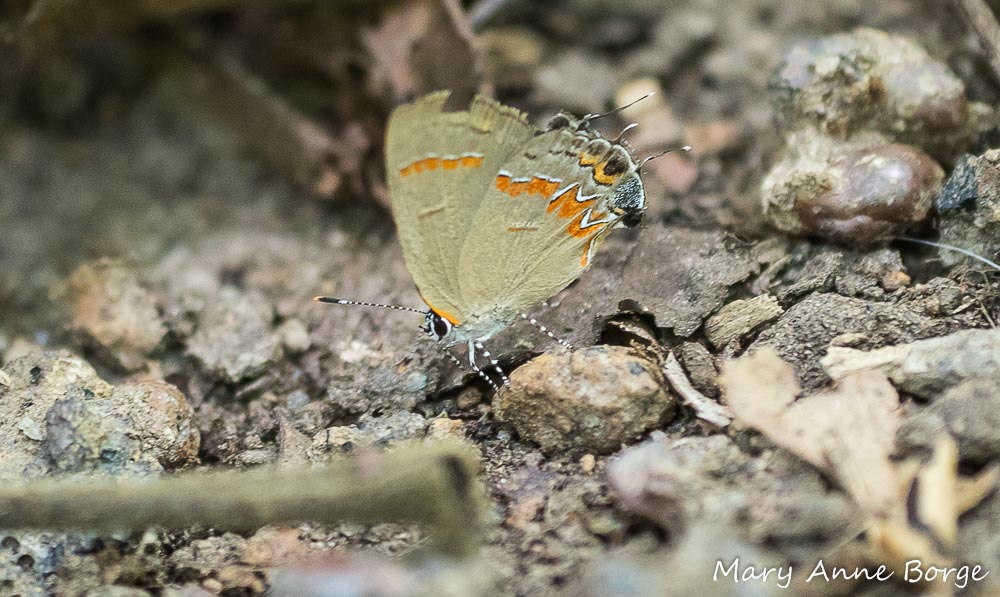
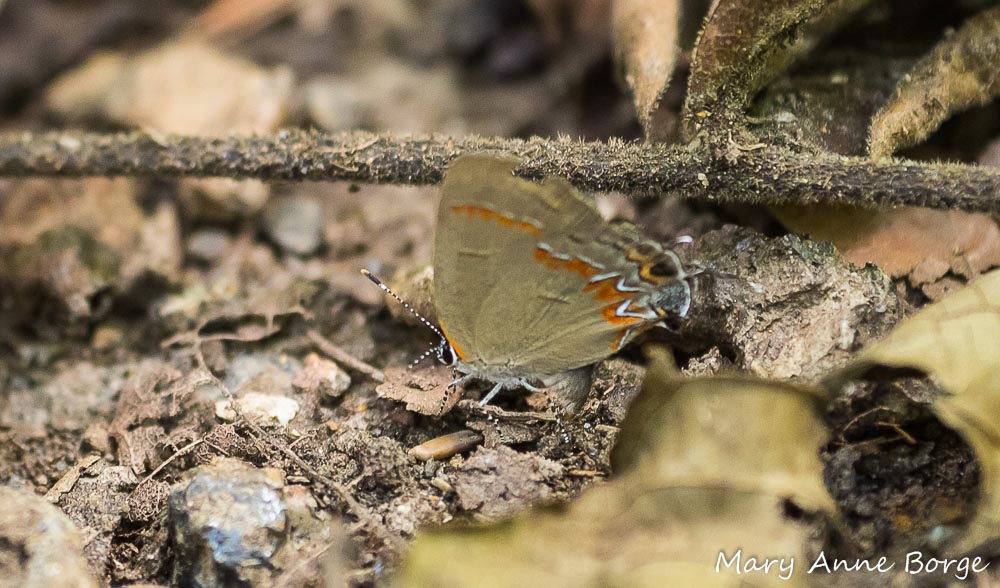
After nearly five minutes, she flew off, presumably scouting for another promising location to lay more eggs.
The caterpillars that hatched from her eggs will spend the winter snug in the fallen leaves, waiting for warm spring days to arrive before completing their metamorphosis to become the next generation of Red-banded Hairstreaks.
Since my encounter with the Red-banded Hairstreak in the woods, I’ve seen other individuals in my own shade garden several times. Fortunately for them and for me, I leave the fallen leaves undisturbed in the garden. I recommend you do the same!
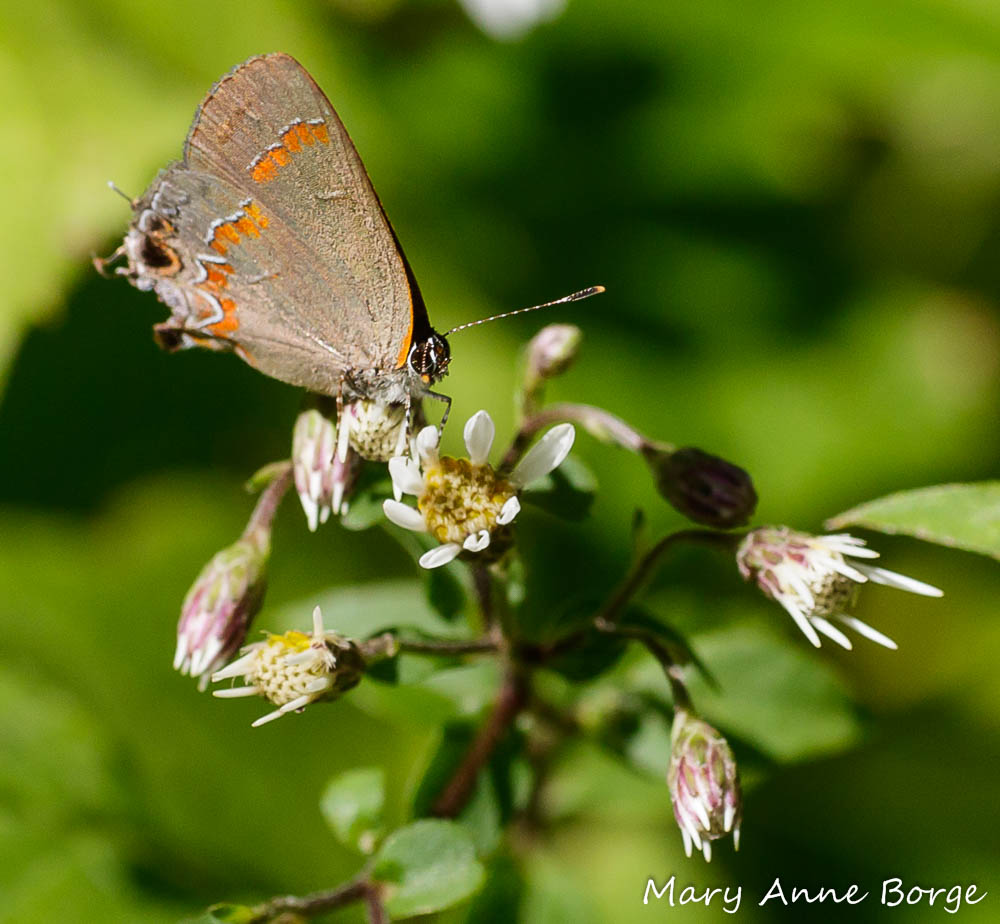

I always appreciate your reminders to leave the leaves. The temptation to tidy up is strong in me, so I need the visual aids. Thanks!
Consider the non-human species, Jess. We’re the only ones who think that removing the leaves is ‘neat’ or the way things should be. The other species with which we co-exist have the opposite opinion.
Excellent point. Now if only I could convince my neighbors that they don’t need to clean up beech nuts/leaves/and other good stuff on a daily basis with their noisy pollution machines!
A worthy goal that’s worth pursuing!
Neighbors!! Such fusspots. They look upon my slightly wild landscape with scorn!
It’s hard, but if you can, try to teach them why you do what you do. You never know, they might understand and change their own ways, even if just a little bit.
Wonderful story, in so many ways!
Thanks, Debby!
I haven’t removed a leaf from my own forested property in years and years. I haven’t seen a red-banded hairstreak, but this year we had a swarm of lightning bugs, who also need the leaf litter. It was beautiful. Thanks for a lovely post–as always.
You are right, there are so many insects that need the leaf litter! Lightning bugs, bees, spiders, and so many more!
Cool photos of the little hairstreak egg laying amongst the litter! Do you have any idea what the functional significance of the wing tails on these little guys are? Always enjoy your postings.
Hi John, the tails look like antenna, to fool potential predators into thinking the tail end of the wings is the butterfly’s head. The butterflies can afford to lose a bit of their wings and survive, but not their heads!
Wonderful reminder and photos, thank you!
Thanks, Julie!
What a great post! I’ve read about what Red-banded Hairstreaks eat, but was always a little skeptical. It’s nice to have photo confirmation. Several years ago I was in working in our backyard. We have an ugly retaining wall made of cement blocks that are open at top. The wall is three rows high and collects anything that falls into the openings, mostly Red Maple leaves. I noticed something climbing out of one of the blocks and went to investigate. It was a newly emerged Hairstreak. Its wings were still crumpled and unexpanded. I put my finger in front of it and it crawled up it to my hand. I turned to show my wife who was working nearbye. “Look at this!,” I shouted. In those few seconds the Hairstreak wings were fully inflated. I’d raised butterflies before and I new it takes a bit of time for the wings to harden enough for them to fly, so I wasn’t in a hurry to show her the butterfly. A few seconds later it flew off my hand. It was a Red-banded Hairstreak. I’ve never cleaned out the cement blocks but haven’t seen any more Hairstreaks.
That’s a great story! Thanks for sharing it with me.
Dear M,
I am sold. That hairstreak is gorgeous. We are committed.
Excellent!